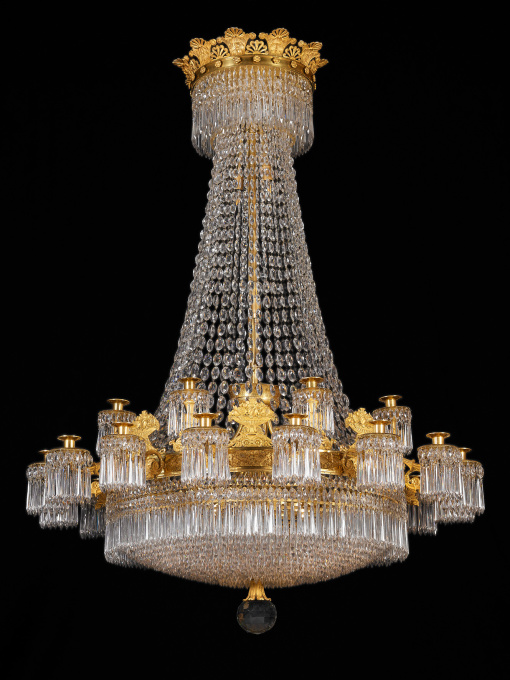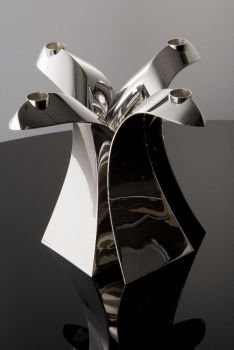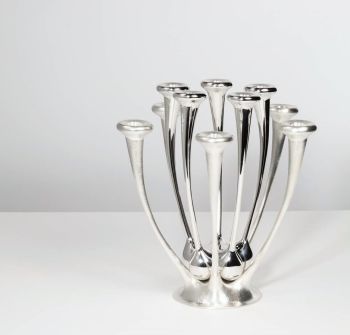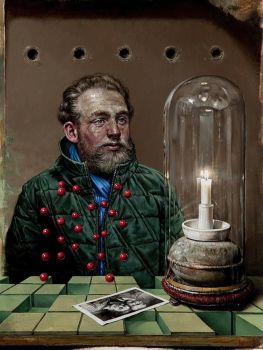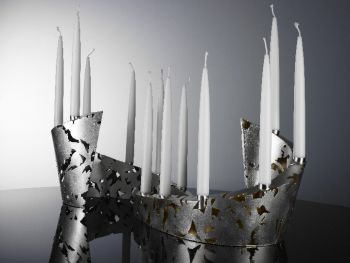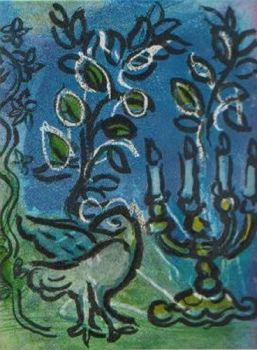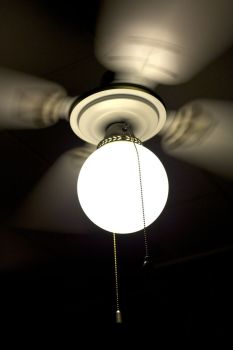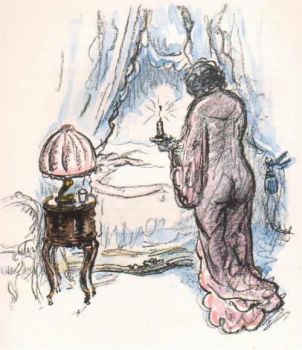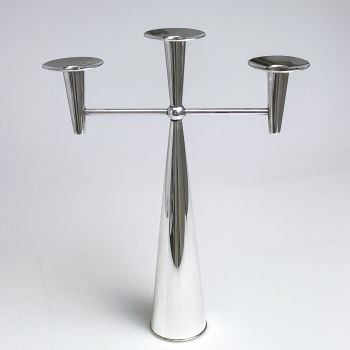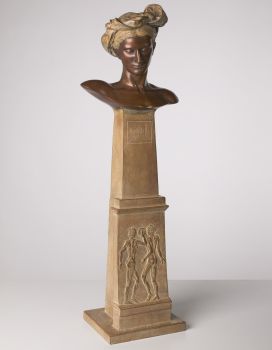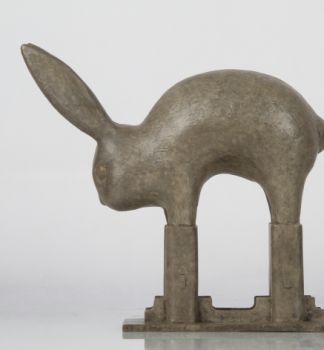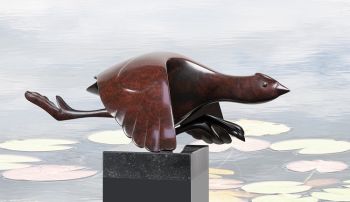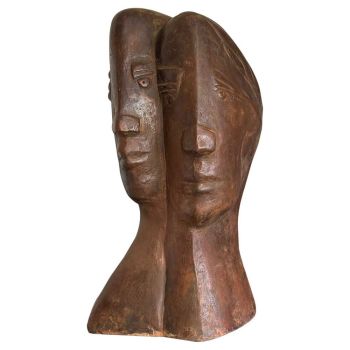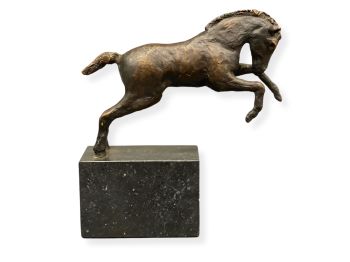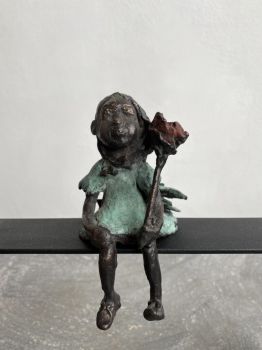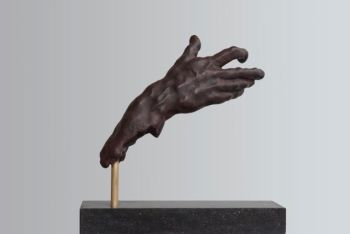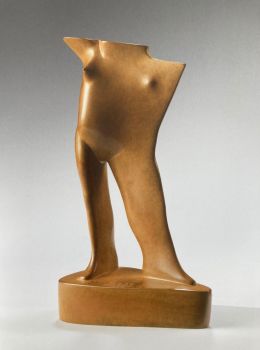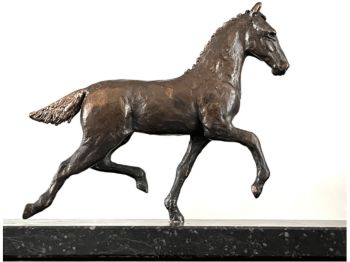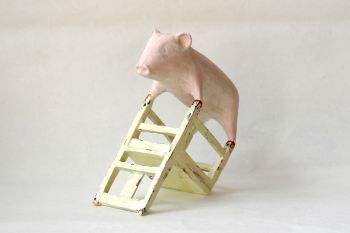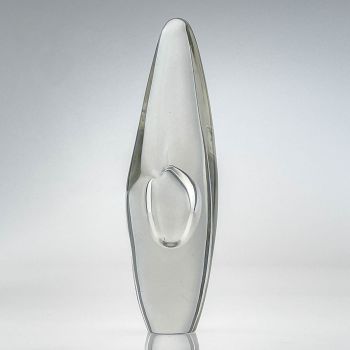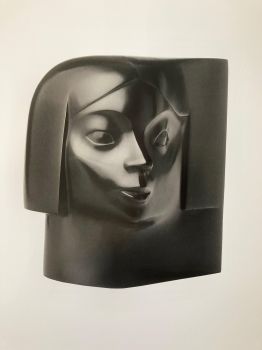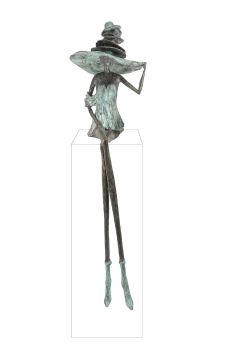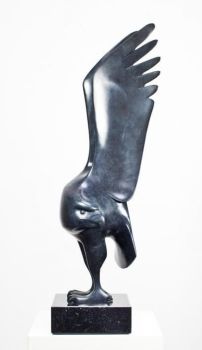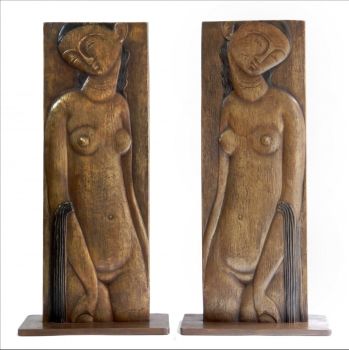A large Empire 24-light Chandelier attributed to Claude Galle 1815
Claude Galle
BronzeCristalMétalGemme
160 cm, ø 120 cm
ConditionExcellent
Actuellement indisponible via Gallerease
- Sur l'oeuvre d'artA large chandelier with 24 lights in two tiers from the French Empire period. The crown at the top of the chandelier is decorated with rosettes on the sides and decorations of alternately stylized palm leaves and lotus leaves. From this crown several rows of cut crystal icicles are hanging down. Forty-eight cords of cut crystal beads run down from the crown and are connected to the main tier.
The main tier, with 16 lights, is decorated with appliques with leaf and fruit motifs. The S-volute shaped arms end in plain shaped candle holders. From the drip trays a double row of crystal almonds and icicles is hanging down. Between every other light, on top of the main tier there are appliques of fruit baskets. The remaining spaces contain another row of eight lights. The dripping trays of these candle holders are decorated with cut crystal in the same manner as the main tier. The lower part of the circle is decorated with two rows of almond shaped crystal beads and 17 rows of crystal icicles. The centre is formed by a faceted crystal ball in a gilt bronze setting decorated with stylized leaf motifs.
A leader in his field, Claude Galle was born at Villepreux near Versailles who moved to Paris to begin an apprenticeship under the fondeur, Pierre Foy. In 1784 Galle married Foy's daughter and on his father-in-law's death in 1788 Galle took over the workshop, which he built up into one the finest of its kind with a workforce of about 400 craftsmen. Galle promptly moved the business to Quai de la Monnaie (renamed Quai de 1'Unité) and from 1805 operated from 60 Rue Vivienne. First listed in the trade registers in 1784 he was received as a maître-fondeur in 1786 and promptly gained the first of many commissions from the Garde-Meuble de la Couronne under Jean Hauré from 1786-88. He is known to have collaborated with Pierre-Philippe Thomire, amongst others, and was responsible for the majority of bronzes d'ameublement supplied during the Empire to Château de Fontainebleau. Other Imperial commissions included the supply of numerous vases, ewers, light fittings, figural clock cases and other fine bronze furnishings for the palaces at Saint-Cloud, the Trianons, Tuileries, Compiègne, Rambouillet and a number of the Italian palaces including Monte Cavallo, Rome and Stupinigi near Turin. Yet despite numerous important commissions Galle was often in debt, partly on account of his lavish life style and also since many of his clients, such as Prince Joseph Napoleon, failed to pay him. After his death Galle's business was reopened and prospered under his son, Gérard-Jean Galle (1788-1846). His work can be found among the world's finest collections including those mentioned above as well as the Musée National de Château de Malmaison, the Musée Marmottan in Paris, the Museo de Relojes at Jerez de la Frontera, the Residenz Munich and the Victoria and Albert Museum in London. - Sur l'artisteClaude Galle est né à Villepreux près de Versailles. Il s'installe à Paris pour commencer un apprentissage auprès du fondeur Pierre Foy. En 1784, Galle épousa la fille de Foy et lorsque Foy lui-même décéda en 1788, ce fut Galle qui reprit son atelier et en fit l’un des meilleurs du genre, employant environ 400 artisans. En 1805, Galle déménage son entreprise au Quai de la Monnaie, et opère à partir du 60 rue Vivienne. En 1786, il était déjà devenu Maître-Fondeur et, en 1786-1788, il obtint la première de nombreuses commandes du Garde-Meuble de la Couronne, sous Jean Hauré. Il est connu pour avoir collaboré avec Thomire, et était responsable de la majorité des bronzes d’ameublement fournis pendant l’Empire au Château de Fontainebleau. Ses autres commandes impériales comprennent la fourniture de nombreux vases, aiguières, horloges figuratives, luminaires, pour un certain nombre d'autres châteaux français, ainsi que des palais italiens. Malgré sa popularité, Galle était souvent endetté en raison d'un style de vie somptueux et de l'échec de plusieurs de ses clients à le payer. Après la mort de Galle, son atelier fut poursuivi par son fils, Gérard-Jean Galle (1788-1846). Son travail fait partie des plus belles collections du monde, comme celles du Musée National de Château de Malmaison et du Victoria and Albert Museum de Londres.
Artwork details
Catégorie
Sujet
Style
Matériel & technique
Related artworks
Artiste Inconnu
Bracelet en diamant du XVIIIe siècle avec intailles vieilles de 2000 ans1790
€ 23.000Adin Fine Antique Jewellery
 Sélectionné par
Sélectionné parDanny Bree
Artiste Inconnu
Set Franse Empire Pendules / Empire Lectura penduleearly 19th
Prix sur demandeKuipers Kunst & Antiek
1 - 4 / 15Artiste Inconnu
UN RARE GRAND TÉLESCOPE EN CUIR LAQUÉ JAPONAIS1750 - 1800
Prix sur demandeZebregs & Röell - Fine Art - Antiques
1 - 4 / 24- 1 - 4 / 10
Artiste Inconnu
Set Franse Empire Pendules / Empire Lectura penduleearly 19th
Prix sur demandeKuipers Kunst & Antiek
1 - 4 / 24

